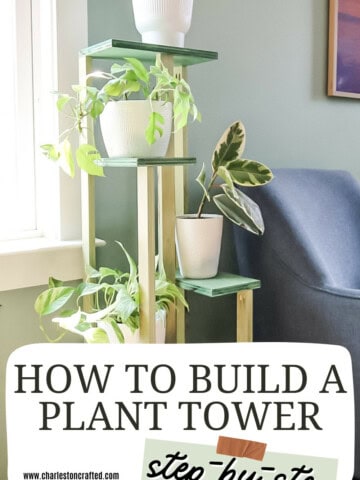Love the look of a calathea peacock plant? They are gorgeous but a bit finicky. Here is how to care for the calathea peacock plant!
I have always loved the look of prayer plants. They have gorgeous dark green leaves with light green and even pink or red variegations.
I have actually grown smaller prayer plants from cuttings but when I saw this taller prayer plant at Plant House, I had to pick one up!
I will say that the wonderful staff at Plant House warned me that these plants are not the easiest to care for - they are a bit finicky and cannot get any tap water.
I usually stick to easier plants, and at their warning actually swapped down to a smaller size plant (to lessen the blow if I killed it, hahaha).
However, I have had my plant growing and thriving for several months now, so I am excited to share everything that I have learned about growing Calathea plants!
Calathea Makoyana is the scientific name for the peacock plant. However, it's called the peacock plant due to it's gorgeous colorful leaves that flare out like feathers!
Let's chat about Calathea Makoyana care!
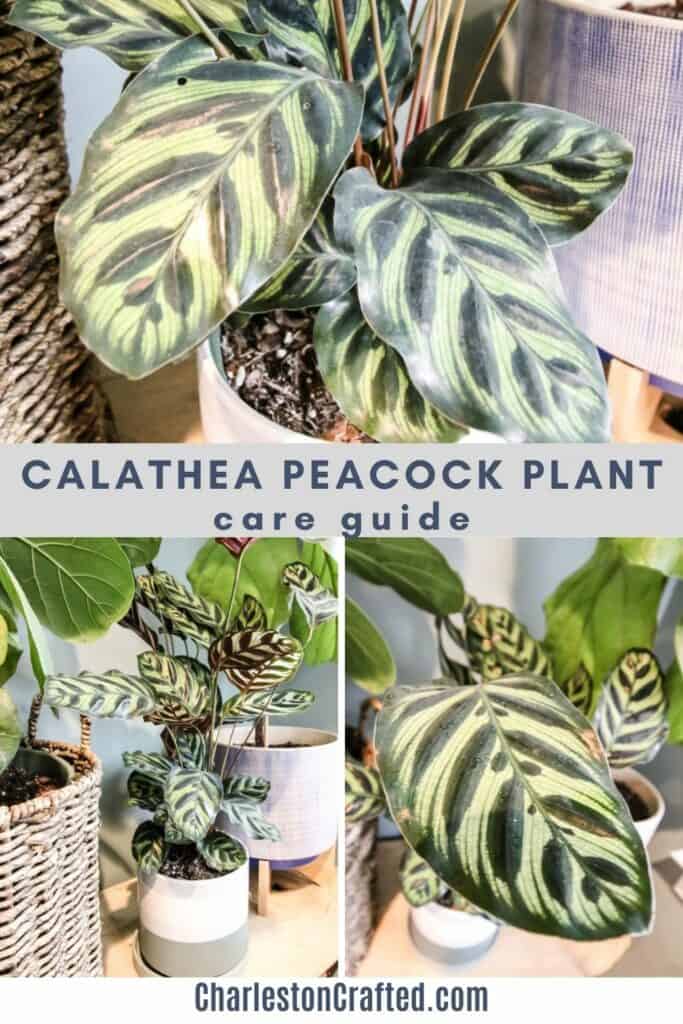
How do you care for a Calathea peacock?
Calathea makoyana peacock prayer plants are not the easiest plants to take care of, but they are doable with the right attention. Here is my Calathea Peacock care guide!
Calathea Peacock watering needs
These plants have very specific watering needs. They are naturally tropical plants and like to be kept at 60-75°F. This makes them great indoor plants.
However, they also like very high humidity levels and can NOT tolerate the chemicals in tap water.
So you can water them with either:
- Rain water
- Tap water set out for over 24 hours
- Distilled water
I personally use distilled water by the gallon from the grocery store. I hope in the spring to install a rain barrel and switch to rain water at that time!
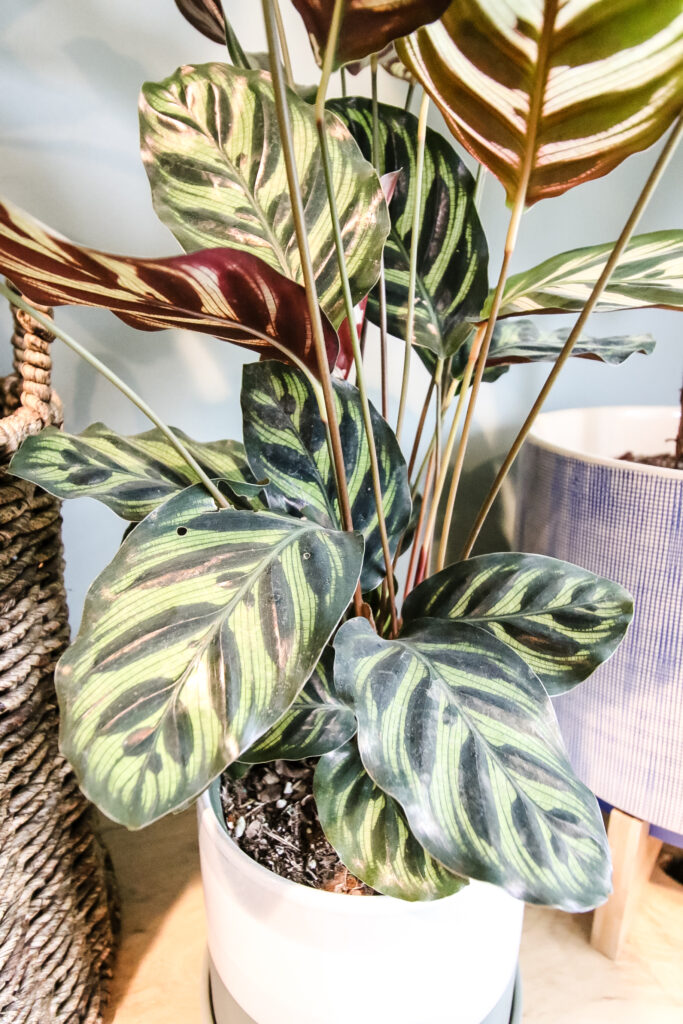
How often do you water a Calathea peacock?
Peacock plants like to stay moist. Water them twice a week in the winter and every 2-3 days in the warmer growing season.
Be sure that your pot has good drainage holes to avoid getting soggy roots which will lead to root rot.
Should I mist my Peacock plant?
Peacock plants need really high humidity. You can either use them with a humidifier, on a pebble tray, or mist them regularly to achieve that steamy feeling.
Never mist your plant with tap water as the fluoride in the tap water can cause brown spots on the leaves.
You can also keep these plants in bathrooms! The steamy shower gives them great humidity - assuming they are getting enough light!
Other ways to get to at least 60% humidity are to group it with other humidity loving plants (they feed off each other's humidity!) or use a pebble tray to encourage moisture!
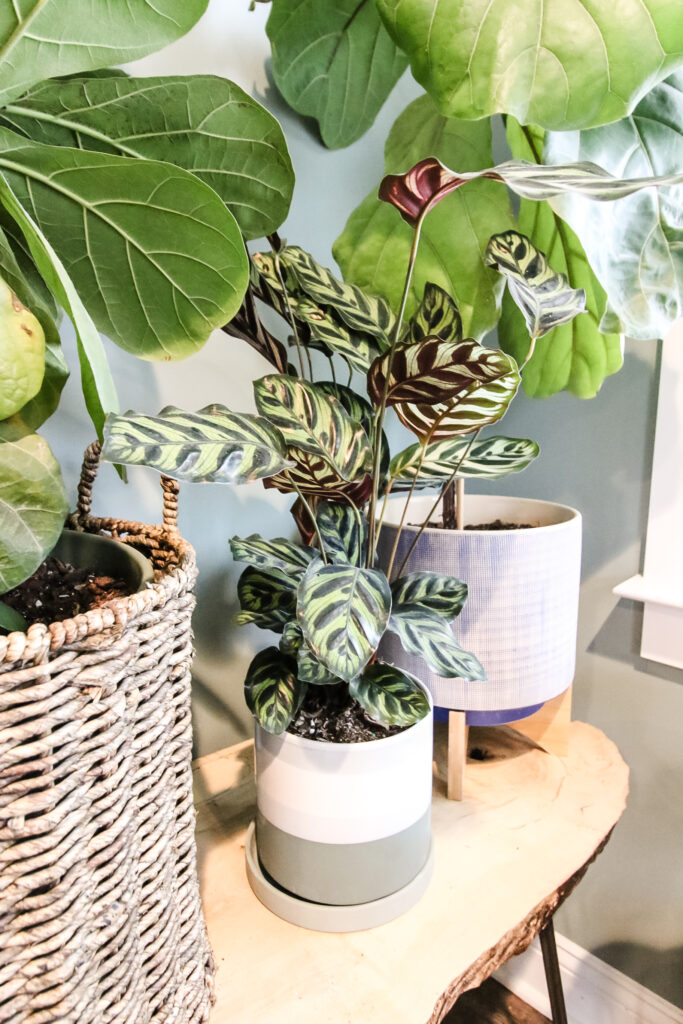
Calathea peacock lighting needs
Calatheas naturally grow under large trees in the rainforest. So, they need bright indirect light. They do not need direct light and will get burned up from direct sun.
Signs that your plant is not getting enough light includes bleached-looking leaves, small leaves, or slow growth.
Does Peacock plant need sunlight?
Peacock plant sunlight should be light and bright but not direct sun. They do well in a north or east facing window. If a window is super bright, move it a bit further from the window.
Can Peacock plants grow outdoors?
These plants like to be warm and humid. They will do well outdoors in zones 10A to 11. Keep them out of direct sunlight which can burn their leaves to a crisp.
If you live somewhere cooler, these plants can go outdoors (out of direct sunlight) in the summer until night temperatures drop below 55 degrees!
Calathea Peacock soil + potting needs
Peacock plant soil should be well draining. Regular potting soil usually works well. Do NOT use cactus soil as it has been known to kill these plants!
You will probably want to re-pot your plant into a larger pot every year or two, preferably in the spring right before their growing season starts!
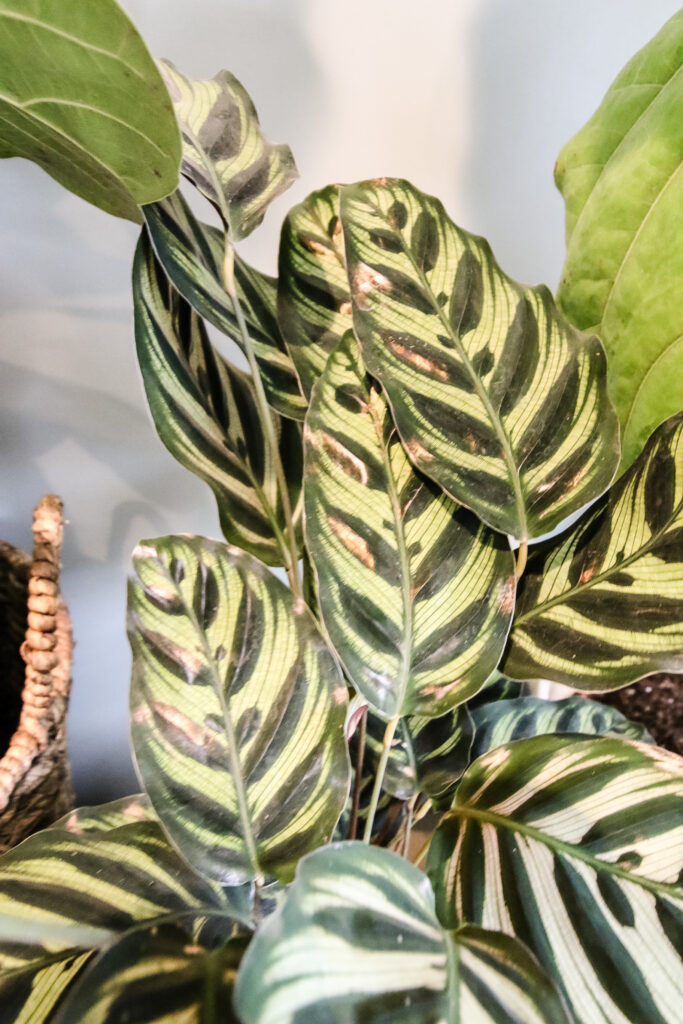
Why is my peacock plant leaves curling?
Curling leaves indicates that your peacock plant needs more water! They need a lot of water, so water a bit more frequently and they should perk up.
Why is my peacock plant getting brown tips of leaves?
Brown spots or brown tips of the leaves usually mean that this plant needs more humidity!
How do you propagate peacock plants?
Peacock plants don't have nodes so you can only propagate them via division!
That means, when you go to re-pot the plant, gently untangle the roots and separate the plant into several pots.
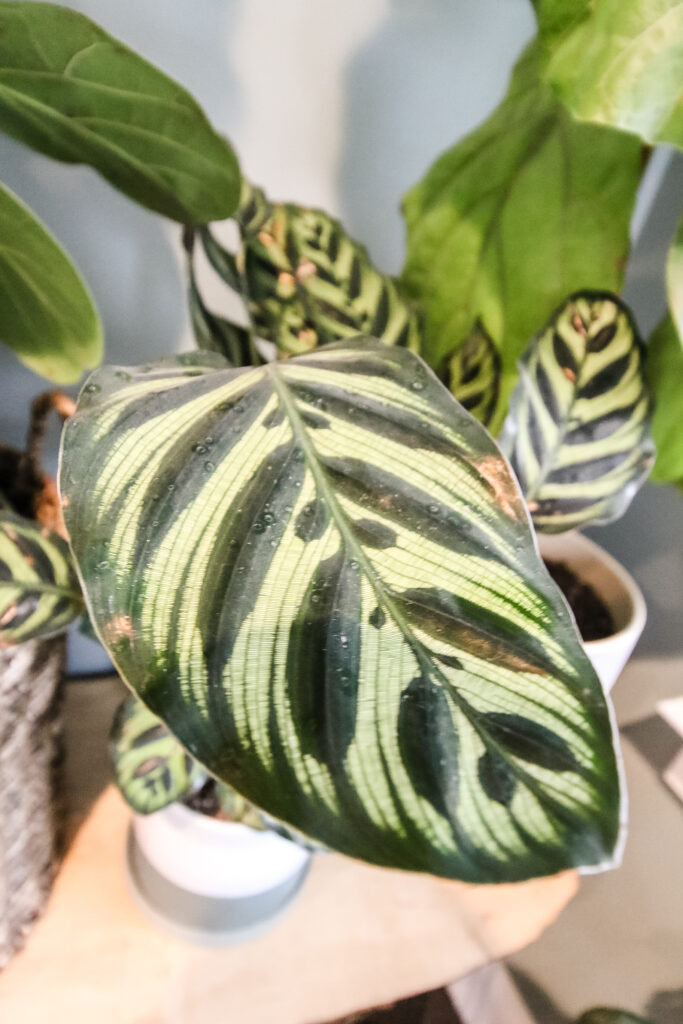
Are peacock plants toxic?
Peacock plants are not toxic to pets or humans! However, it's still best to keep it out of reach of grabby kids and hungry cats.
You don't want to go to all this trouble to mist your plant every day just for your cat to eat it, trust me (I have a cat and toddlers so I can talk!)
Any questions about how to take care of a peacock plant?!
Want to show your houseplants some love?!
--> How to clean plant leaves
--> How to propagate a plant (free eBook!)
--> When to repot a plant
--> Rotating houseplants
--> When to cut leaves off of plants
Looking for something?
We've been doing this since 2012 so we have a LOT of blog posts!
Search stuff like: Ceiling Projects | DIY Plant Stands | Thrift Flips


Hello, I'm Morgan, half of the creative force behind CharlestonCrafted.com! With a passion for DIY that dates back to 2012, I've transformed three homes and now I'm dedicated to helping others craft their dream spaces. Let's turn your house into a home together!


